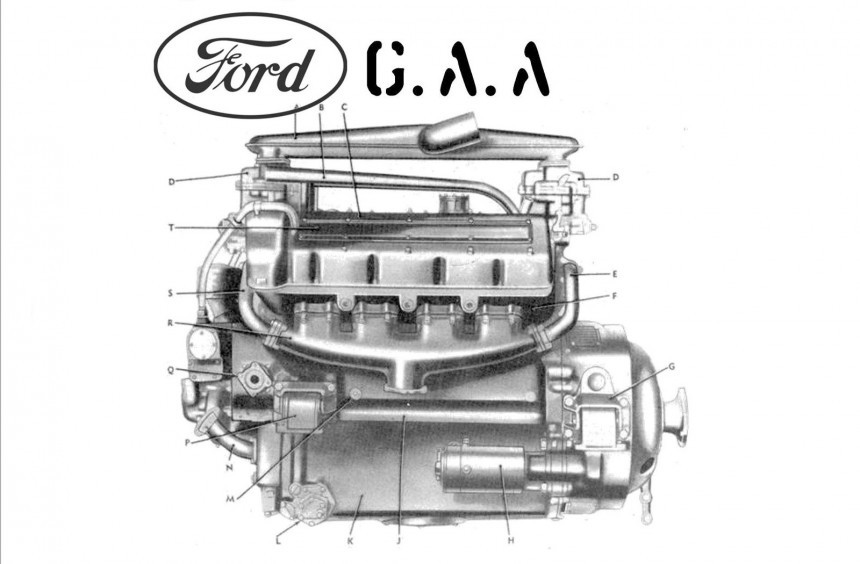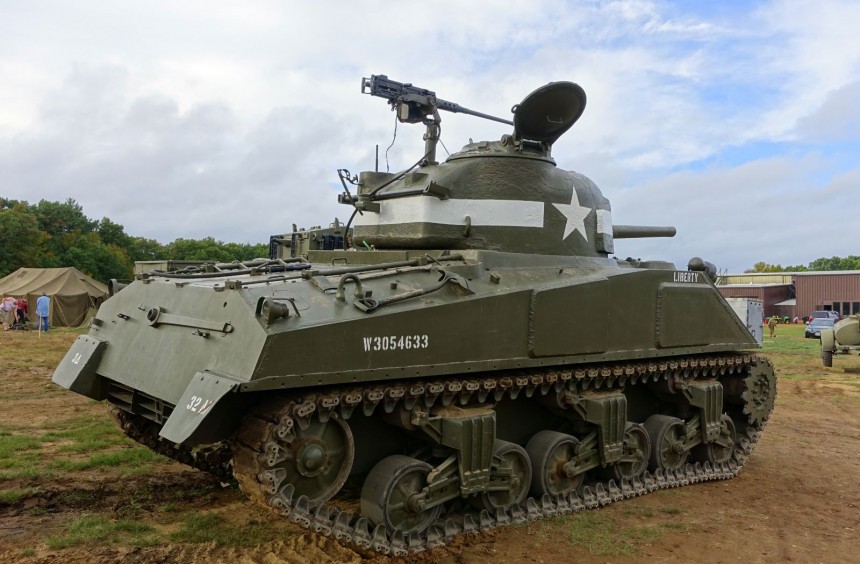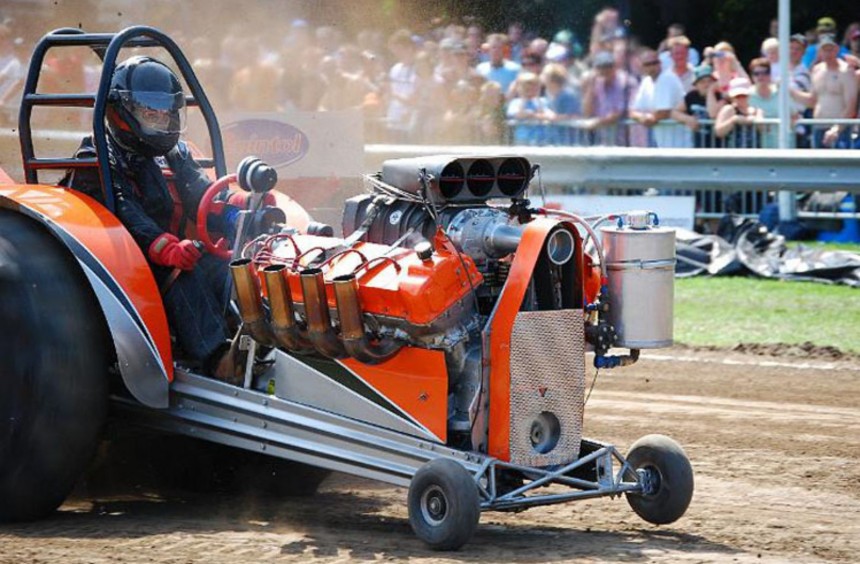During the last two centuries, Ford has been responsible for some of the most impressive V8 engines ever built. Although the most popular have been those that powered high-performance cars, the most impressive gasoline-fueled Ford V8 of them all ended up in a tank.
That tank was the legendary M4 Sherman, the most widely-used medium tank by the U.S. Army and Allied Forces during World War II. But, before it powered Shermans, the GAA V8 started life with four more cylinders and was meant to fly.
Shortly before WWII officially broke out, prominent global industrialists that could already smell smoke rushed to take advantage of the impending crisis. As you might expect, one of them was Henry Ford who, among many other military-related projects, instructed the company’s best engineers to develop the best lightweight, high-performance V12 that money could buy. Mainly eyeing the aviation sector, this engine needed to be better in every way than the versatile Rolls-Royce Merlin, unquestionably the most illustrious engine in existence, at the time.
Like the Merlin, Ford’s new twelve-cylinder had to be extremely powerful and reliable, which resulted in a similar unit. Its 1,650-ci (27-liter) displacement, as well as its bore and stroke sizes, were all identical to those of the Merlin. However, the American engine was lighter and more powerful, making anywhere from 1,800 to 2,220 hp. It also showed a lot of promise during the reliability test, so Ford was extremely confident about securing a major government contract. Henry Ford even went as far as ordering all the tooling and casting components required for large-scale manufacturing.
Much to his surprise, the tried and tested Allison V12 was chosen over his new engine because there were loads of spare parts readily available, so it was seen as easier to maintain.
Fortunately for Ford’s coffers, the company found out that the U.S Army was looking for additional V8s for its medium-size Sherman tanks and it transformed its new V12 into an eight-cylinder legend.
Codenamed GAA, it was an all-aluminum unit that shared the same architecture as the innovative V12, which meant that it could be mass-produced with only minor modifications to the existing assembly line, tooling, and castings.
Displacing 1,100 ci (18 liters), the double overhead (DOHC) cam powerplant was a true work of engineering art. Nearly five feet long (1,5 m) and three feet wide (0.9 m), the gargantuan V8 was equipped with twin Stromberg NA-Y5-G carburetors, dual magnetos, and twin spark plugs, which made it one of the very few eight cylinders with of the era with a dual ignition system and crossflow induction. Moreover, it used no belts or chains to drive its components. Everything was set in motion by a precise gear system instead which made it a lot more reliable. In fact, during trials organized by the army, it proved almost as reliable as the older diesel engines also used by some versions of the tank.
Apart from its lightweight, yet nearly-bombproof construction, it was very powerful, pushing out 500 hp, more than any other engine ever fitted into a Sherman. Even more impressive, it produced no less than 1,050 lb-ft (1,424 Nm) of peak torque as low as 2,200 rpm, which was exactly what the Sherman needed.
Manufactured in large numbers at the Lincoln plant located on the west side of Detroit, the GAA was (and still is) Ford’s largest gasoline-fed V8 and arguably the most durable. It proved its worth during WWII in countless battles, helping the Sherman become one of the Allied Forces’ most lethal weapons.
After the war ended, thousands of units saw civilian use in various fields including oil extraction, transport, and agriculture. It was during these years that people began tinkering with it and uncovering its true potential. With minor modifications such as the addition of forced induction, its initial output doubled, while when stronger pistons, direct fuel injection, and a more refined valvetrain were combined with a turbo or a supercharger, the GAA could reliably produce more than 2,000 hp.
Although humongous for a car, it was used in some heavily-modified drag strip monsters where it had no match. While this only lasted for a few years, as it was subsequently banned by most organizers, Ford’s mighty V8 would return to the world of motorsport several decades later thanks to the crazy world of tractor-pulling. With modern tuning, custom components, and fed nitrous, it is known for making up to 5,000 horses, albeit for short bursts.
Now, 82 years old, this titan was overshadowed in terms of popularity by other Ford V8 developed during the golden age of muscle cars but, in terms of performance potential, reliability, and size, it remains unrivaled.
In the video below by mctnkr88, you can watch a fully-restored GAA being fired up and run at different RPMs.
Shortly before WWII officially broke out, prominent global industrialists that could already smell smoke rushed to take advantage of the impending crisis. As you might expect, one of them was Henry Ford who, among many other military-related projects, instructed the company’s best engineers to develop the best lightweight, high-performance V12 that money could buy. Mainly eyeing the aviation sector, this engine needed to be better in every way than the versatile Rolls-Royce Merlin, unquestionably the most illustrious engine in existence, at the time.
Like the Merlin, Ford’s new twelve-cylinder had to be extremely powerful and reliable, which resulted in a similar unit. Its 1,650-ci (27-liter) displacement, as well as its bore and stroke sizes, were all identical to those of the Merlin. However, the American engine was lighter and more powerful, making anywhere from 1,800 to 2,220 hp. It also showed a lot of promise during the reliability test, so Ford was extremely confident about securing a major government contract. Henry Ford even went as far as ordering all the tooling and casting components required for large-scale manufacturing.
Much to his surprise, the tried and tested Allison V12 was chosen over his new engine because there were loads of spare parts readily available, so it was seen as easier to maintain.
Codenamed GAA, it was an all-aluminum unit that shared the same architecture as the innovative V12, which meant that it could be mass-produced with only minor modifications to the existing assembly line, tooling, and castings.
Displacing 1,100 ci (18 liters), the double overhead (DOHC) cam powerplant was a true work of engineering art. Nearly five feet long (1,5 m) and three feet wide (0.9 m), the gargantuan V8 was equipped with twin Stromberg NA-Y5-G carburetors, dual magnetos, and twin spark plugs, which made it one of the very few eight cylinders with of the era with a dual ignition system and crossflow induction. Moreover, it used no belts or chains to drive its components. Everything was set in motion by a precise gear system instead which made it a lot more reliable. In fact, during trials organized by the army, it proved almost as reliable as the older diesel engines also used by some versions of the tank.
Manufactured in large numbers at the Lincoln plant located on the west side of Detroit, the GAA was (and still is) Ford’s largest gasoline-fed V8 and arguably the most durable. It proved its worth during WWII in countless battles, helping the Sherman become one of the Allied Forces’ most lethal weapons.
After the war ended, thousands of units saw civilian use in various fields including oil extraction, transport, and agriculture. It was during these years that people began tinkering with it and uncovering its true potential. With minor modifications such as the addition of forced induction, its initial output doubled, while when stronger pistons, direct fuel injection, and a more refined valvetrain were combined with a turbo or a supercharger, the GAA could reliably produce more than 2,000 hp.
Now, 82 years old, this titan was overshadowed in terms of popularity by other Ford V8 developed during the golden age of muscle cars but, in terms of performance potential, reliability, and size, it remains unrivaled.
In the video below by mctnkr88, you can watch a fully-restored GAA being fired up and run at different RPMs.











